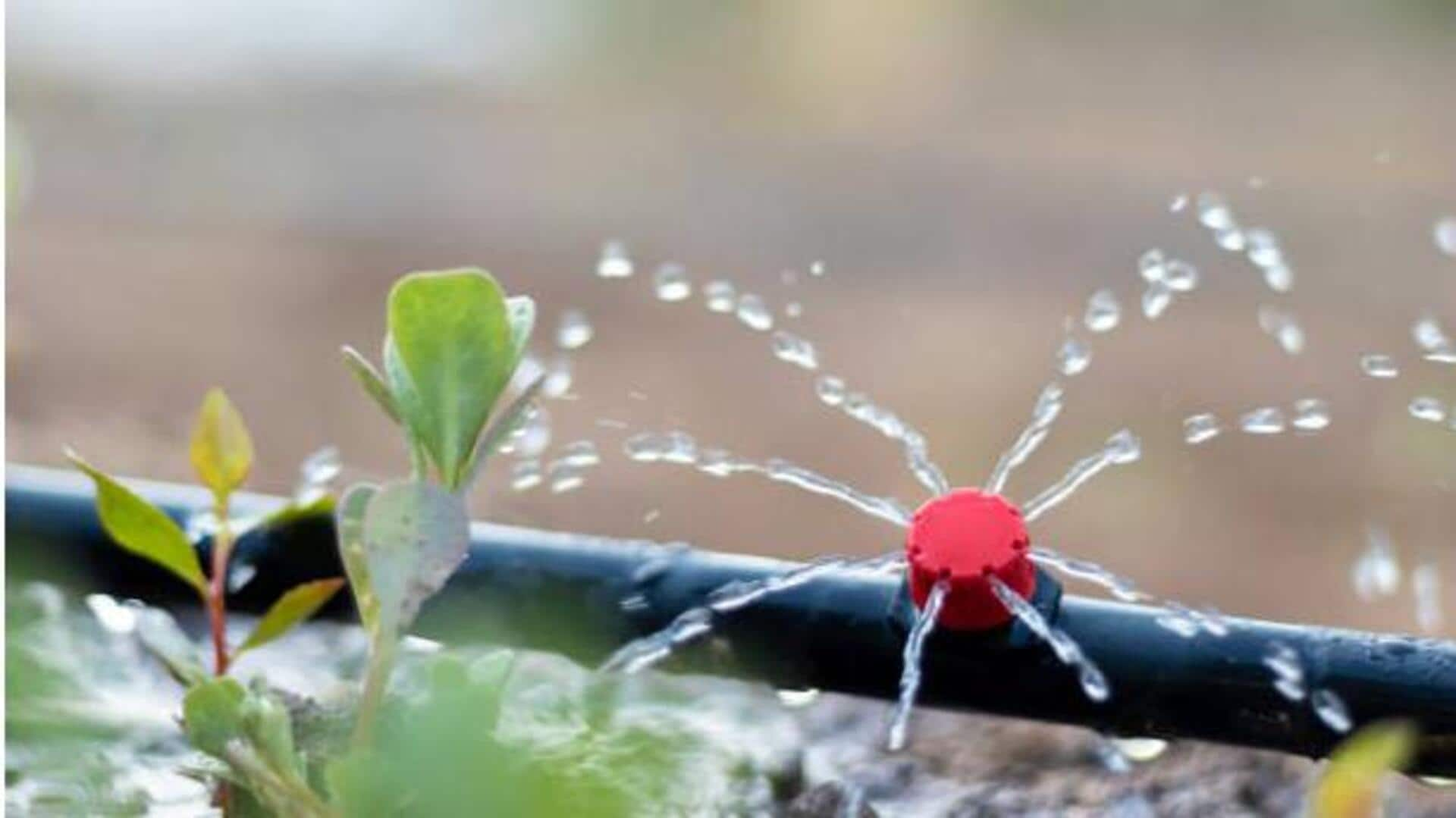
Gardening 101: Try these drip irrigation hacks
What's the story
Drip irrigation is the most efficient method to water your houseplants and conserve water by targeting the roots of the plant, thereby reducing evaporation and runoff. Using simple household items, you can set up a DIY system that keeps your plants hydrated and healthy. Here are some practical solutions for creating your indoor garden's drip irrigation system.
Bottle method
Using plastic bottles
Did you know plastic bottles can be repurposed into an effective drip irrigation system? Just fill a bottle with water, make some small holes in the cap, and bury it upside down near the plant's base. The water will seep out slowly, keeping the soil consistently moist. It's cost-effective and you can control the flow rate by adjusting the number of holes.
Wick method
Wick system setup
The wick system employs absorbent materials such as cotton or nylon rope to pull water from a reservoir into the soil. Simply place one end of the wick in a container with water and the other end in the plant's potting mix. This will provide continuous hydration, as long as there's water in the reservoir, making it perfect for short trips away from home.
Spike method
Ceramic spike solution
Ceramic spikes are another option for drip irrigation. You insert these spikes into the soil with their narrow ends attached to a bottle or jar of water. The porous nature of ceramic allows gradual release of moisture into the soil, keeping them optimally hydrated without overwatering them.
Gravity method
Gravity-fed system design
A gravity-fed system consists of placing a large container above plant level and connecting it with tubing directly into each pot. Using gravity, this arrangement delivers steady drips of water through adjustable valves on each tube line, evenly distributing it across multiple plants at once, while wasting as little as possible with its controlled delivery mechanism.